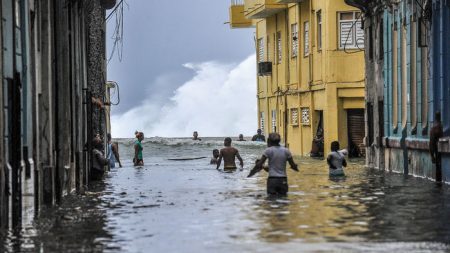January 12, 2018 – Recognizing that climate change is not a short-term thing, the government of Cuba, after experiencing Hurricane Irma in September, has set a course to alter where its people live and it agricultural systems to ensure its long-term survival.
The plan is called Tarea Vida which translates to Project Life. It includes the following:
- banning new construction in coastal areas
- relocating people in communities that will be inundated by rising sea levels within the next century
- shifting crop production away from saltwater contaminated aquifers
- restoring degraded shoreline habitats to fight coastal erosion
Irma was the catalyst for the project which is being headed up by Cuba’s Ministry of Science, Technology and the Environment. States marine scientist, David Guggenheim, President of the non-profit, Washington-based Ocean Doctor, “Cuba is an unusual country in that they actually respect their scientists, and their climate change policy is science driven.”
The biggest challenge to the island nation is rising sea levels. Over the last 50 years, Cuba has measured an average increase of 7 centimeters (2.75 inches). That has been enough of a rise to erode coastal beaches and inundate wetlands. Storm surges like Irma illustrated how such a small rise in sea levels when combined with extreme weather can raise havoc as was witnessed in Havana.

One of the big coastal restoration projects will involve the restoration of mangroves, described as the first line of defense against erosion. Many of the existing mangroves were heavily damaged by Hurricane Irma exposing previously protected shorelines and leading to spikes in soil salinity in affected low lying areas.
Tarea Vida is also setting aside budget money for other coastal restoration projects including:
- reviving coral reefs damaged by industrial pollutants from shoreline industries and agricultural runoff.
- hardening coastal structures from jetties to seawalls such as El Malecón.
- building up of beaches and offshore keys in tourist areas.
Cuba has approached The Netherlands for assistance in coastal re-engineering. The Dutch are particularly gifted in developing infrastructure to fight off rising seas.
But it is the relocation of coastal communities that will be the toughest of the tasks the government has set for itself. It will mean educating the people of those villages so that they become more climate-change aware, and get involved in the planning for their move and the future site of their new homes.
Hurricane Irma may not be a phenomenon associated with climate change and global warming. Nonetheless, it has proven to be a catalyst for this island nation to get their house in order and begin a century-long journey to a sustainable future.
What’s so interesting about this story is: the Cuban government gets it whereas the U.S. government and its people do not.
Climate change science is vanishing from the lexicon of the U.S. federal government, and the American public keeps buying shoreline properties where sea level rises and coastal erosion point to a precarious future.















